Sunday mid-day explores the diverse, ancestral culinary traditions of the Kodava community, deeply rooted in Coorg’s forests, fields, and culture
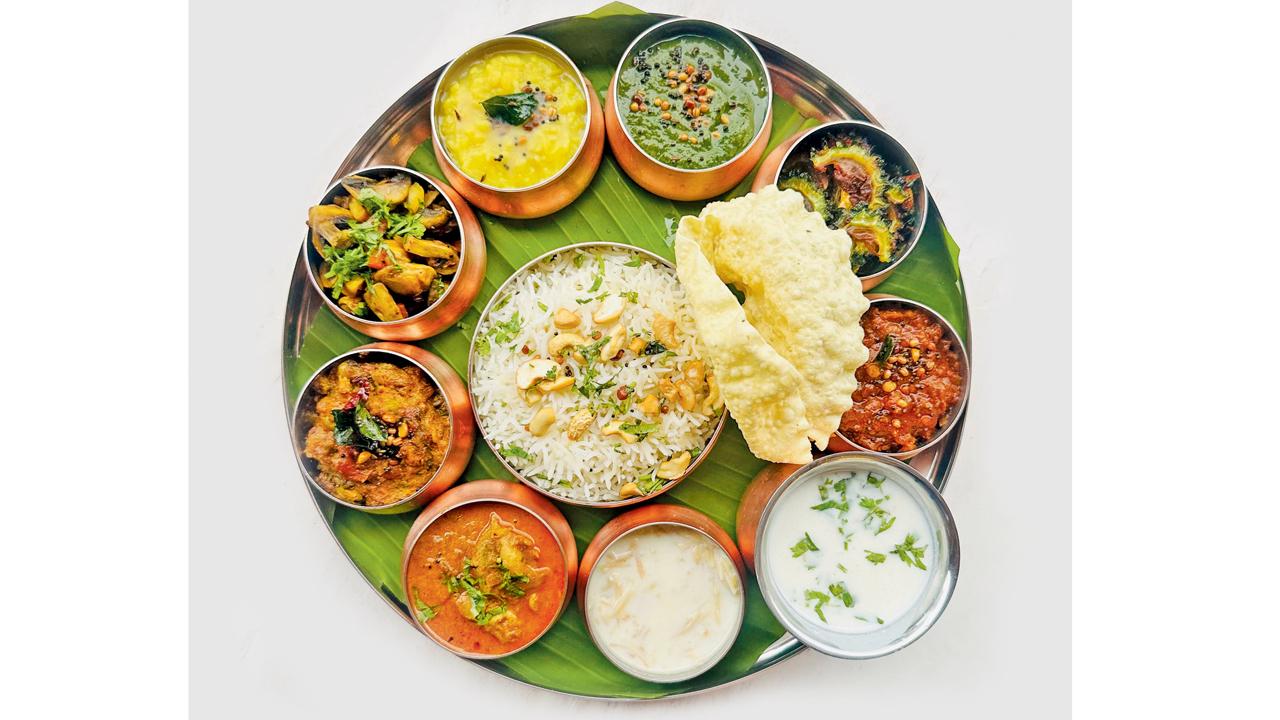
Balekkai Kootu, Anabe Barthad, Tarkari Gasi, Ney Choru, Koli Saaru, Semiya Payasam, Neer More, Coorgi Mutton Curry, Hagalakayi Palya and Soppu Charu
At 7 AM, we set out on a walk through Makkandur Forest in Madikeri, Coorg. Mist-covered hills and sprawling coffee plantations framed our path, with the gentle songs of birds accompanying us on this immersive journey into the rich biodiversity of the Western Ghats — a UNESCO World Heritage Site. Makkandur is home to rare trees and bird species, offering sweeping views of Coorg’s countryside dotted with tropical evergreens, wild ferns, and medicinal plants. The region is home to hundreds of unique species, including over 350 types of birds, reptiles, insects, and amphibians. Among them are vividly coloured cobras and vipers, striking turquoise butterflies, and palm-sized crimson snails with gleaming black shells. Larger inhabitants include elephants, bison, barking deer, wild boar, and the rare, elusive tiger. Along the trail, black pepper — though cultivated — thrives naturally in the forest’s microclimate alongside cardamom and vanilla vines, which are occasionally found growing wild. Tree trunks, often cloaked in moss, lichens, and ferns during the monsoon, host blooming epiphytic orchids clinging to misty branches. This is Kodagu’s wilder side: untamed, meditative, and deeply intertwined with nature — a place where you can still hear the forest breathe.
Here, we plucked four avocados hanging from the tree.
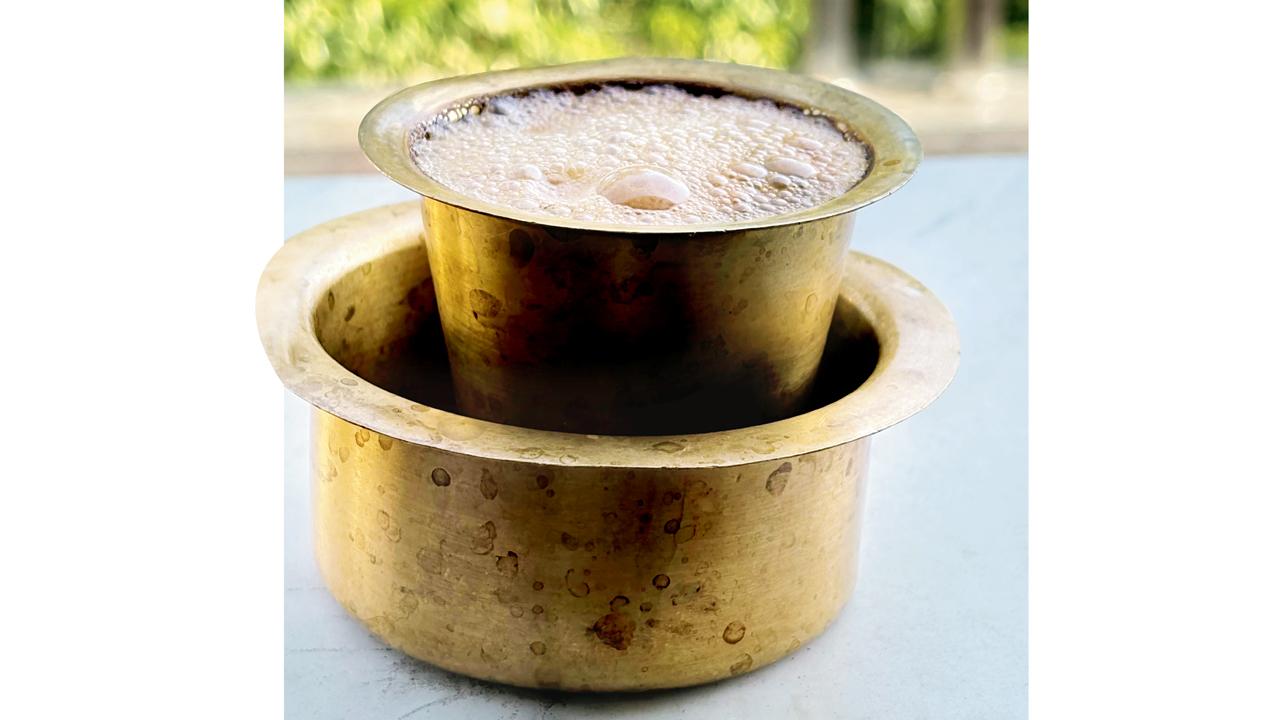
Our guide, Naturalist Abilash Puliyeri Ravi at Coorg Marriott Resort and Spa, recalls growing up with avocado—what locals call a butter fruit—mashed with jaggery or sugar, and sometimes a splash of milk, for a quick snack or breakfast. While not part of traditional Kodava cuisine, avocados are finding their way into modern Coorg kitchens, adding a creamy richness to salads, smoothies, and chutneys. The fruit thrives in Coorg’s cool climate and well-drained soils, often grown in homestead gardens or intercropped with coffee and pepper. Although not native, it has been cultivated here for decades and is now gaining commercial traction. The ICAR-developed ‘Arka Coorg Ravi’ variety, prized for its high yield and pulp recovery, is leading this shift. Westfalia, an avocado-focused agricultural company, also operates a nursery in Coorg, supplying premium cultivars such as Hass. Butter fruit has a thin green skin and a larger pit. It also does not ripen consistently and tastes less sweet. The Hass has more flesh, a longer shelf life, is creamier and sweeter, and has a dark, black exterior. These also have a fat content of around 12 per cent, making them tastier. Initially, Westfalia attempted to cultivate the indigenous variety, but it proved unsuitable for long-distance transportation and exports. Hence, they decided to go with Hass. With rising urban demand and a growing market, Coorg is quietly becoming an emerging hub for avocado cultivation.
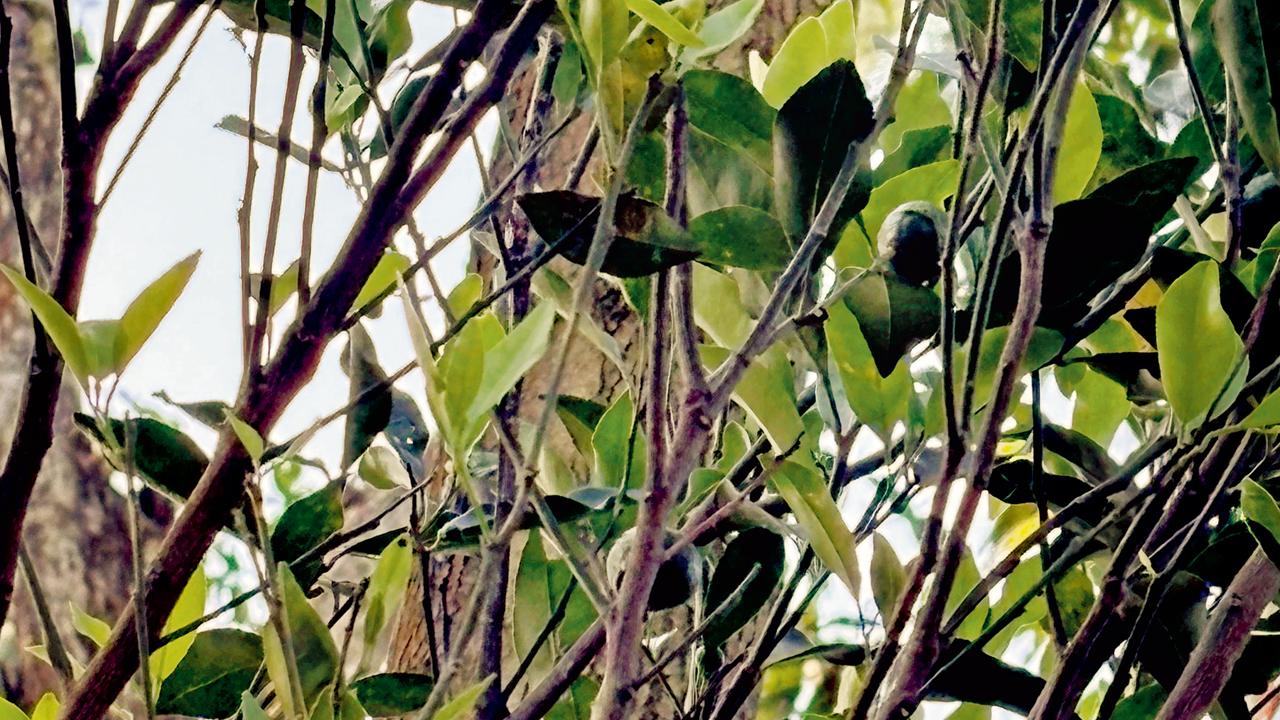
While pandi curry is Coorg’s most iconic dish, Kodava cuisine is far more diverse — deeply rooted in seasonal produce, forest foraging, and ancestral traditions that reflect the community’s bond with the land Abhilash also shared how oranges in Coorg — locally known as Coorg mandarins — were once as iconic to the region as coffee and pepper. These small, juicy, and sweet citrus fruits flourished in the region’s cool, hilly climate and well-drained soils. Traditionally grown alongside coffee in shade-grown plantations, they added biodiversity and provided farmers with a valuable secondary income. However, since the early 2000s, orange production in Coorg has declined sharply due to the widespread occurrence of fungal diseases such as citrus dieback and greening, poor replanting practices, shifting weather patterns, and depleted soil fertility. Today, revival efforts are underway, led by the Indian Institute of Horticultural Research (IIHR) and the Kodagu Orange Growers’ Associations, which are introducing disease-resistant varieties and training farmers in improved orchard management.
 While pandi curry is Coorg’s most iconic dish, Kodava cuisine is far more diverse — deeply rooted in seasonal produce, forest foraging, and ancestral traditions that reflect the community’s bond with the land
While pandi curry is Coorg’s most iconic dish, Kodava cuisine is far more diverse — deeply rooted in seasonal produce, forest foraging, and ancestral traditions that reflect the community’s bond with the land
That night, we enjoyed a hearty meal of Kodava cuisine at the Madikeri Kitchen at the hotel, minus the iconic pandi curry, prepared by the hotel’s Executive Chef Anirudh Deshpande. It gave us an insight into the cuisine’s nuanced culinary tradition shaped by the forests, fields, and festivals of Coorg. Seasonal ingredients like Balekkai Kootu (raw banana with dal), Anabe Barthad (wild mushroom with fennel, crushed black pepper), Tarkari Gasi (mixed veg with coconut, coriander seed, jeera and tamarind), Hagalakayi Palya (bitter gourd with mustard seed, onion and grated coconut), Coorgi Mutton Curry, Koli Saaru (chicken with roasted coconut, fennel and local spices) reflect the community’s deep connection to the land. The Soppu Charu was our favourite, so was the Mango Curry—both had distinct flavours, laced with simplicity.
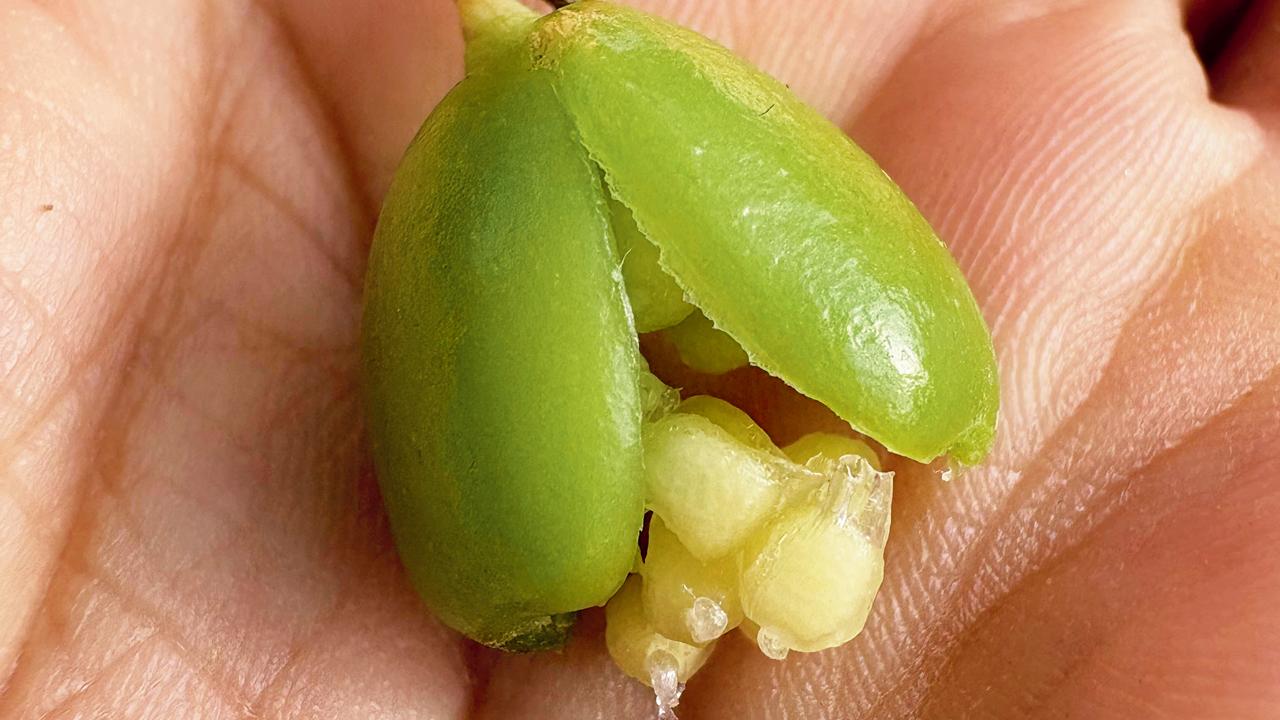
Spices are minimal but meaningful—pepper, bird’s eye chilli and kachampuli (a tart vinegar made from brindle berry fruit) give Kodava food its distinctive, tangy kick. Chef Deshpande believes it’s not just about what’s on the plate—it’s about preserving identity, seasonality, and storytelling through food.
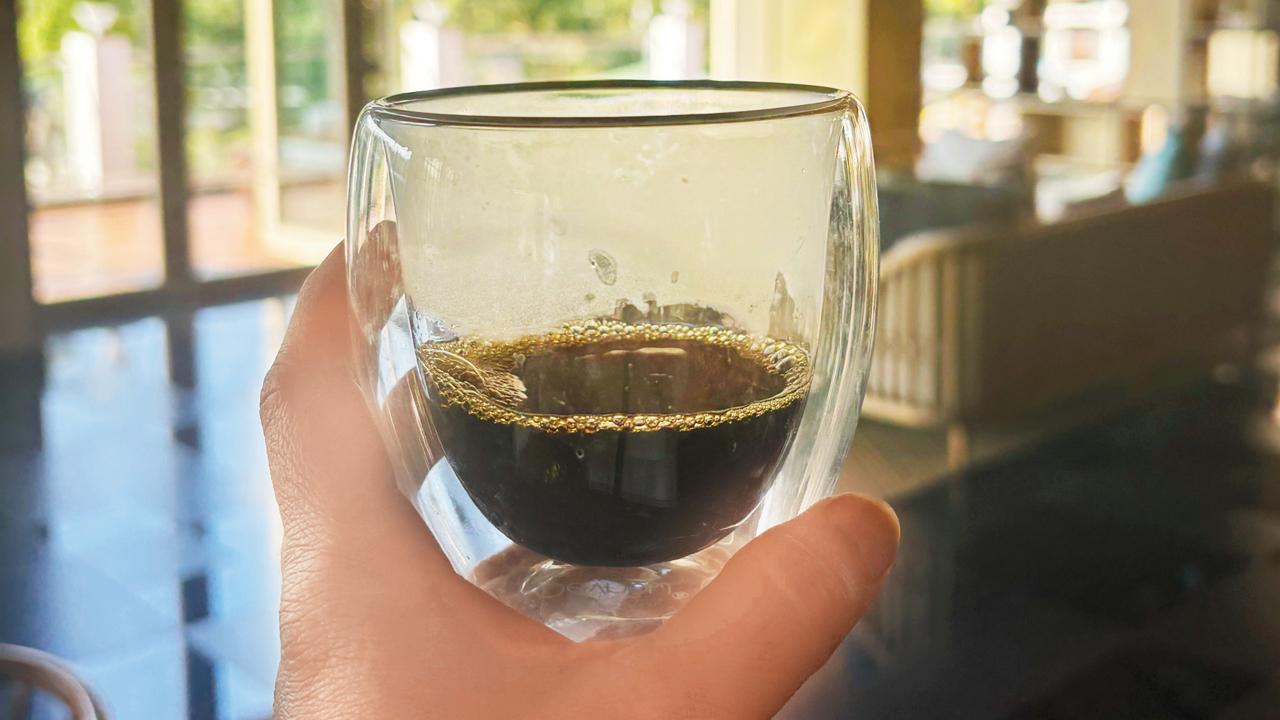 Bella Coffee
Bella Coffee
We found it interesting that a passion fruit drink is also a part of the thali. Locally known as passimara juice, it’s made from passion fruit puree and is lightly spiced with a hint of salt or green chilli—perfect for sipping between the rich, spicy flavours of the meal. Passion fruit has gained popularity in Coorg over the past couple of decades, driven by growing interest in exotic fruits. A tropical climate, ample rainfall and fertile red soil make Coorg ideal for this climbing vine to flourish. It’s mostly grown on trellises, often as a companion crop alongside coffee or on field margins. Over the years, passion fruit farming has been expanding, supported by agri-entrepreneurs and local processing units.
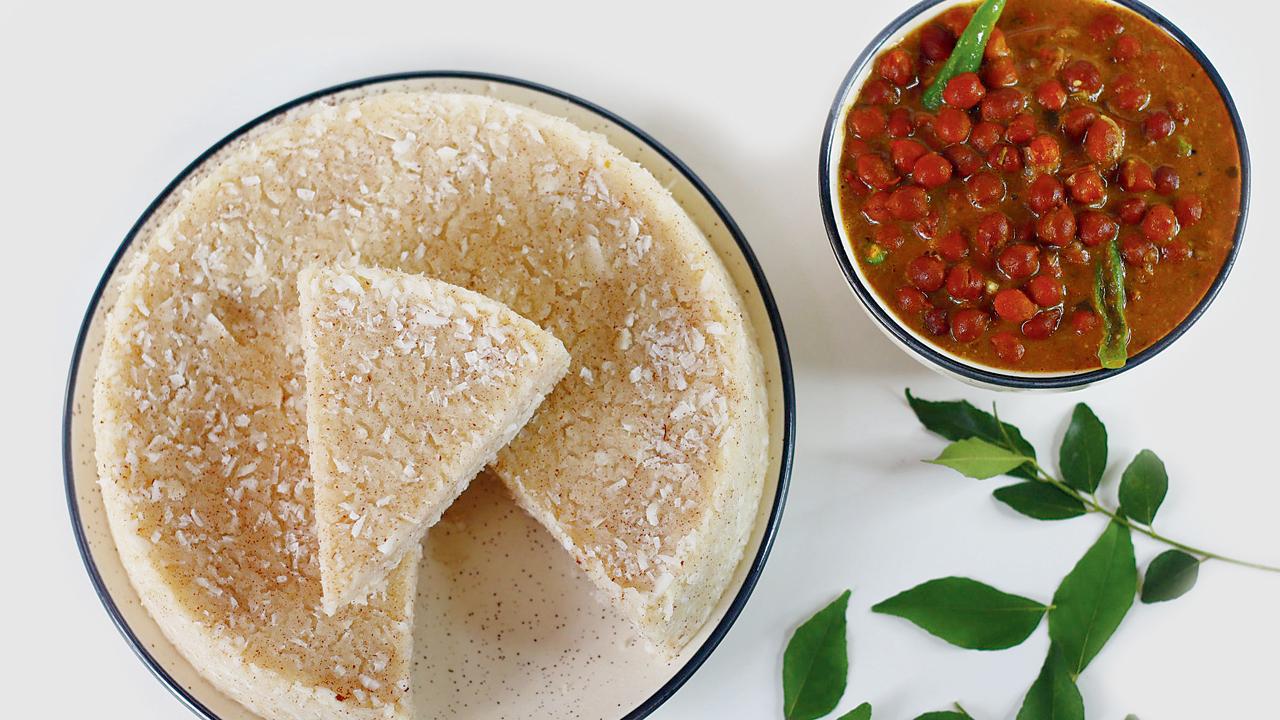 Steamed matta rice cakes, cooked with milk and coconut, are often paired with spiced curries — a comforting taste of traditional Coorg
Steamed matta rice cakes, cooked with milk and coconut, are often paired with spiced curries — a comforting taste of traditional Coorg
The next evening, during bonfire storytelling sessions organised by the hotel, we learnt about the Kodava community and the deep yet complex bond with the elephants. Traditionally, forest dwellers, agriculturists, and the Kodavas revered elephants as symbols of strength, often featuring them in local lore and rituals. But as forests shrink and farms expand, wild elephants increasingly raid coffee estates and fruit crops, turning sacred animals into a threat to livelihoods. The following day, we crossed the Cauvery on foot—a memorable experience, especially during the dry season when the river’s water level recedes enough to expose shallow stretches and natural stepping stones to reach Dubare Elephant Reserve. Feeding tamed wild elephants in a serene setting was a simple, almost meditative act. Coming back to the elegantly furnished villa, we sipped on coffee, taking in the breathtaking views of the surrounding lands before heading for a relaxing therapy at the hotel’s Quan Spa.
 Homemade fruit wines are crafted from local produce
Homemade fruit wines are crafted from local produce
Coorg’s coffee plantations flourish in its cool climate, generous rainfall, and fertile soil, producing shade-grown Arabica and Robusta beans prized for their rich aroma and complex flavours. Often intercropped with spices such as pepper and cardamom, these plantations blend traditional and sustainable farming practices, making Coorg one of India’s most renowned coffee-growing regions since 1854.
 Dubare Elephant Reserve in Coorg is a forest camp where visitors can observe, feed, and learn about elephants, many of whom were once part of Karnataka’s logging and festival processions
Dubare Elephant Reserve in Coorg is a forest camp where visitors can observe, feed, and learn about elephants, many of whom were once part of Karnataka’s logging and festival processions
The Riverside Coffee Estate, founded in 1898, stands true to this heritage. Nestled in a vibrant ecosystem, it combines ecological balance with century-old cultivation methods. Beyond farming, Riverside offers immersive tours and homestays that invite visitors to experience the heart of Coorg’s coffee culture firsthand.
Founder Rishwin Devaya champions the belief that no two Coorg coffees are alike. The Coffees of Coorg project partners with eight planters across varied altitudes and farming styles to showcase eight unique coffees—each telling its own story. He has brought together Nadikeriyanda Vikram Appaiah (Karadigod Estate, Siddapur), Palecanda Anita Aiyanna and Vishal Ponnappa (Devi Villa Estate, Kutta), Paruvangada Chirag Bopaiah and Poonacha (Akankshe Estate), Ashish Rao (Skia Coffee, Nelaji), Codanda Adip Bopaiah (Sree Ram Estate, Thora), Bolacaranda Uma and Dr. Kariappa (Karkukaad Estate), Priamvada Gajaraj (Abeos Estate, Kadagadal) and Appanervanda Anita Nanda and Muddu (Surya Kiran Estate, Hattihole) to retail through his platform for special edition batches. “Over the last few years, we at Riverside have set up facilities to market and sell our coffees directly to consumers. Now, we want to use our platform to empower planters from the region to get their coffee directly to the consumers. More than a product line, it’s a tribute to the planters whose innovations and dedication elevate Coorg coffee into an unforgettable experience,” says Devaya.
An interesting addiction we acquired from the hotel is the Bella kapi, a traditional Coorg coffee made with jaggery (bella), often enjoyed with breakfast dishes like akki rotis and ellu pajji. The coffee is typically brewed with a strong, dark-roasted coffee powder. Cardamom and crushed ginger are added for additional flavour, and jaggery, instead of sugar, contributes to its distinctive flavour.
The simplicity of the region grows on you. Once a favourite of colonial administrators, Coorg or Kodagu, takes its name from the indigenous Kodava people. It is also called the ‘Scotland of India,’ as the region’s misty hills, lush valleys, dense forests, and cool climate evoke a landscape reminiscent of the Scottish Highlands but Coorg also carries the fragrance of its plantations. We returned with scents of the land, with the aromas of fresh green pepper, cardamom pods, and vanilla still lingering in our suitcases.
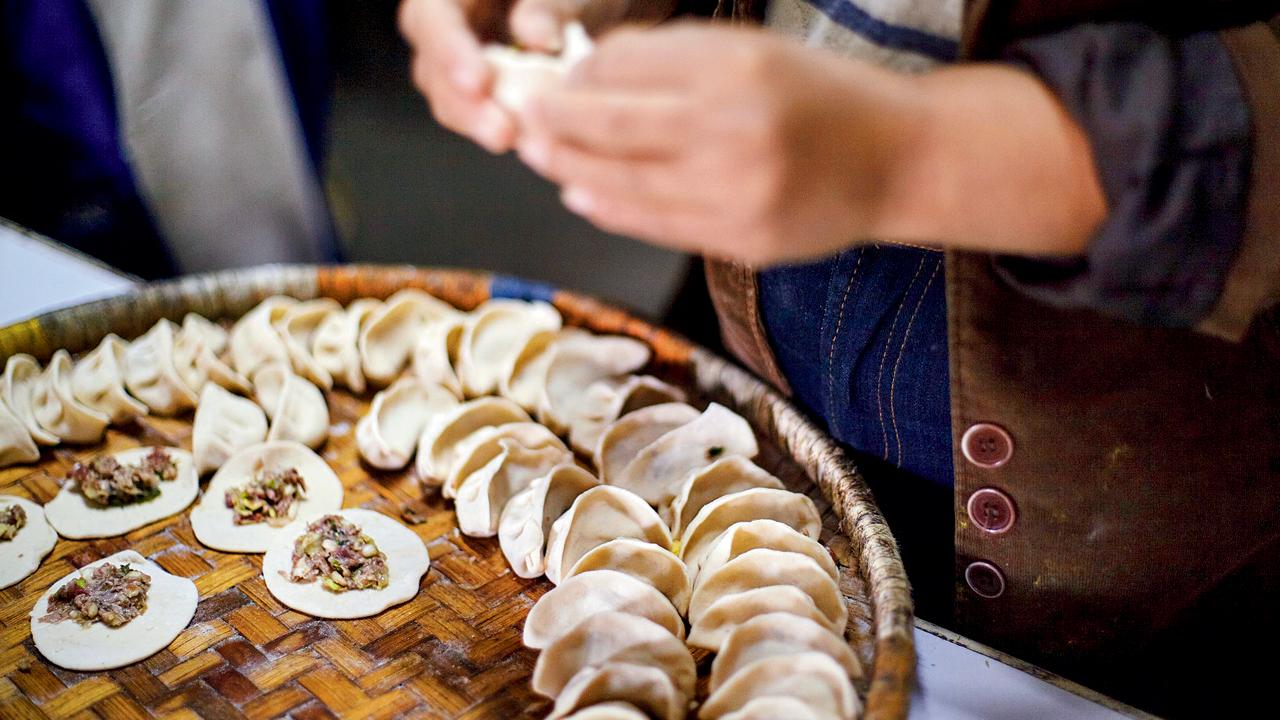 Momos are a local favourite
Momos are a local favourite
Tibetans of Coorg and their influence on the Kodava cuisine
In 1959, following the Chinese invasion of Tibet, the Indian government resettled thousands of Tibetan refugees in Coorg, primarily in Bylakuppe — one of the largest Tibetan settlements in India. Though culturally distinct, the Tibetan and Kodava communities have coexisted peacefully for decades, contributing to the region’s rich cultural mosaic. The influence of Tibetan cuisine on traditional Kodava food has been subtle yet noticeable, with Tibetan dishes such as momos, thukpa (noodle soup), and tingmo (steamed bread) now commonly found in local markets and food stalls. The coexistence reflects more of a culinary coexistence than a blending — two parallel food cultures thriving in the same geographical area. In fact, in Coorg, the harmonious coexistence of different faiths is beautifully symbolised in a rare sight: a church, temple, and mosque situated adjacent to one another in the town of Virajpet. While the Kodavas themselves are primarily ancestor worshippers and follow their own indigenous practices, the region as a whole has long embraced a multi-religious identity without conflict.
Origins of the clan
Although the origin of the Kodavas in Karnataka remains a mystery, researchers believe they are the descendants of pre-Islamic Kurds, originating from the present-day Turkey, Iran, and Iraq region.
1854
Commercial coffee growing began in Coorg. Now, Arabica and Robusta are grown here
350
Types of birds, reptiles, insects and amphibians are found in the forests of Coorg
1959
When the Indian government resettled thousands of Tibetan refugees in Coorg
 Subscribe today by clicking the link and stay updated with the latest news!" Click here!
Subscribe today by clicking the link and stay updated with the latest news!" Click here!










